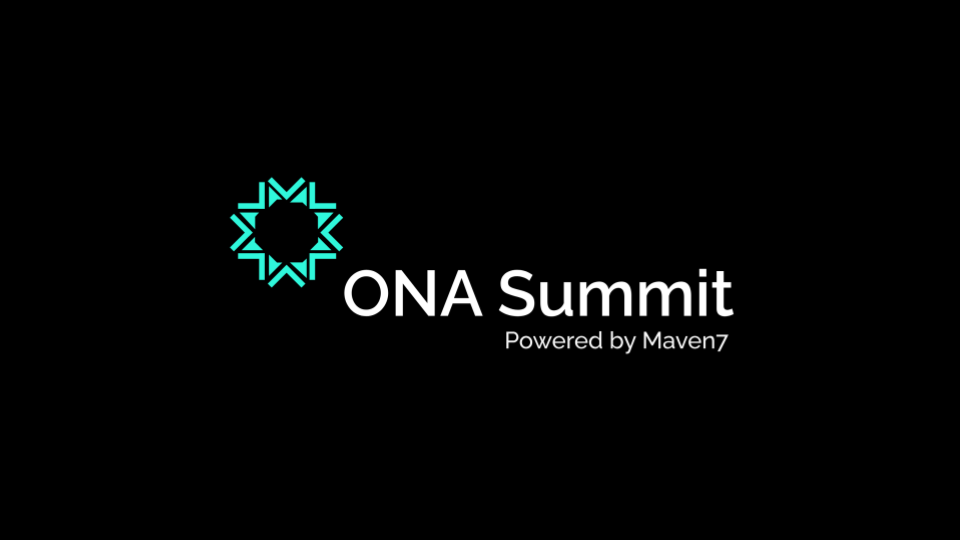Monday, October 27, 2025
Monday, October 27, 2025

Orla Clancy:
As organizations grapple with AI-driven transformation and evolving work models, the Organizational Network Analysis Summit returns with a timely focus: understanding the informal connections that truly drive organizational performance.
Taking place virtually on November 5-6, the ONA Summit brings together HR professionals, communication leaders, organizational development experts, and change managers from across the globe to explore how data-driven network insights can unlock organizational potential.
“We wanted to bring together people who believe in the power of human connections and informal connections, having an influence on the performance of organizations — on transformation, on everything that is part of the natural life of organizations,” explained András Vicsek, one of the Summit organizers. “But not only the importance of human connections — by bringing in data and insights to understand these connections, you can actually help improve all of these things.”
For communication professionals, the summit offers critical insights into what Vicsek calls “trusted dialogue-driven communication” — a channel distinct from traditional top-down approaches. “There’s this very important channel, which is the trusted dialogue-driven communication,” he noted. “How do you use these informal networks to create a totally new type of communication channel based on trust and dialogue? What are the things you can achieve that you cannot achieve through formal communication?”
AI’s Impact on Organizational Networks
The Summit’s opening session tackles a question on everyone’s mind: what are the consequences of using AI on collaboration? “Is an AI agent a team member or just a tool? And how will that impact the way we work together?” Vicsek posed. Recent research suggests that generative AI is already reducing collaborative conversations as people turn to AI for answers rather than colleagues — a trend that could fundamentally reshape organizational networks.
Yet Vicsek sees nuance in AI’s impact: “People use AI to make discussions smoother, better, manage conflicts or hard discussions, sensitive discussions. It’s helping communication actually, connecting people in a better way if they can navigate cultural differences or find the right wording for their message.”
From Theory to Practice
The Summit features leading voices including Michael Arena, Biola University: Dr. Leandro Herrero, The Chalfont Project; and Greg Pryor, Connected Commons, who will explore “the collaborative consequences of AI” based on his experience as former VP at Workday.
A key resource emerging from the field is The Social Capital Imperative, published by Oxford University Press in April with 50 global authors. “There was no textbook focused on use cases and applications,” Vicsek explained. “You had separate case studies, research-driven textbooks on social network analysis, but you didn’t have this summary of all the different use cases — what actual organizations did, what the impact was, and how they did it.”
Panel discussions will explore the Network First Manifesto, adaptive cross-functional teams at Roche, and individual-level social agility. Sessions on talent management at scale will draw on experiences from Amazon AWS, while discussions on mobilizing influencers will demonstrate how organizations can build dialogue-driven communication channels.
The Data Behind the Networks
The field itself is evolving. While traditional survey-based network mapping remains popular for capturing qualitative relationship data — trust, advice-seeking, influence — newer approaches analyze digital footprints from emails, calendar invites, and collaboration tools.
“What’s new is going deeper with predictive analytics,” said Vicsek. “If there’s some kind of business outcome variable — whether it’s revenue or agility scores for teams — we can actually understand what are the predictors. Why are certain teams better or more agile or generating more revenue compared to others? What are the collaboration patterns behind that?”
With approximately 250 registrations already confirmed and participants spanning time zones from India to San Francisco, the Summit reflects growing recognition that, as one participant noted, “if you take a lot of the humans out of the picture, the network should be what you’re left with.”
Registration remains open at www.onasummit.com.
Strategic Magazine is the official media partner for ONA Summit 2025.
Written by: Editor
© 2025 Stratpair Ltd., trading as Strategic. Registered in Ireland: 747736